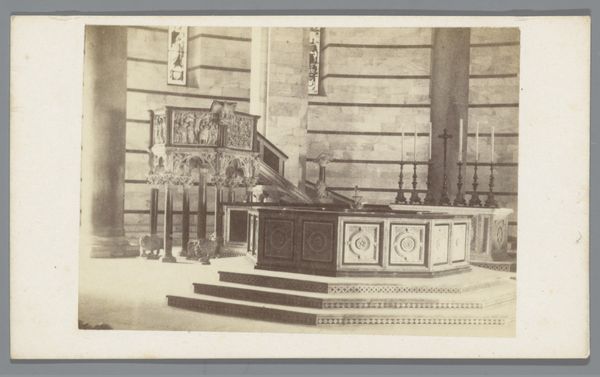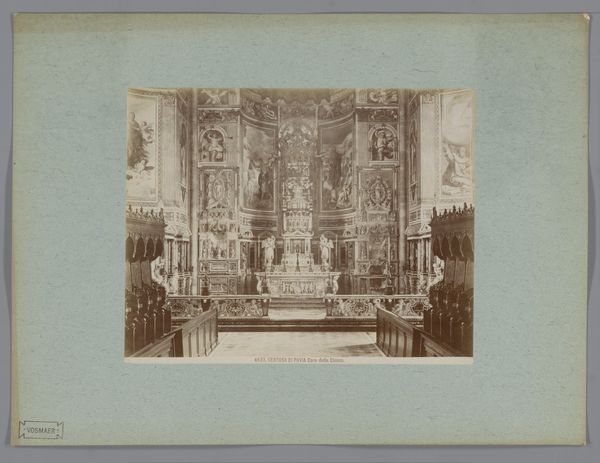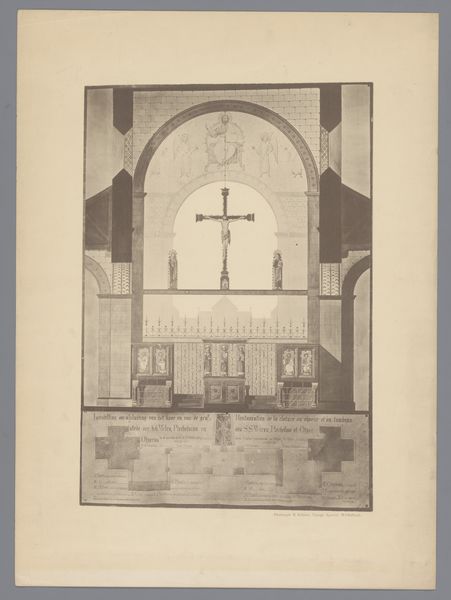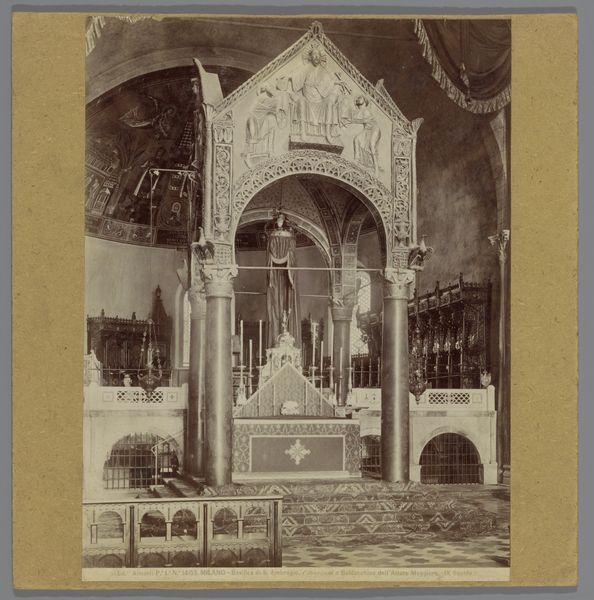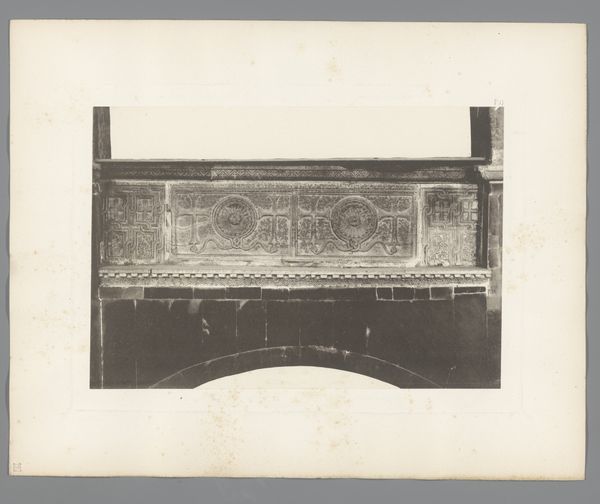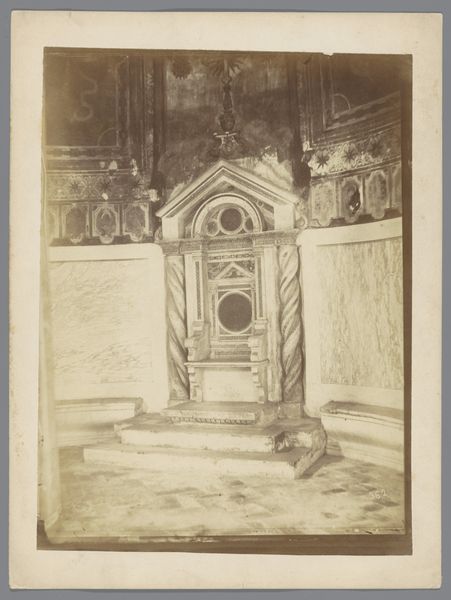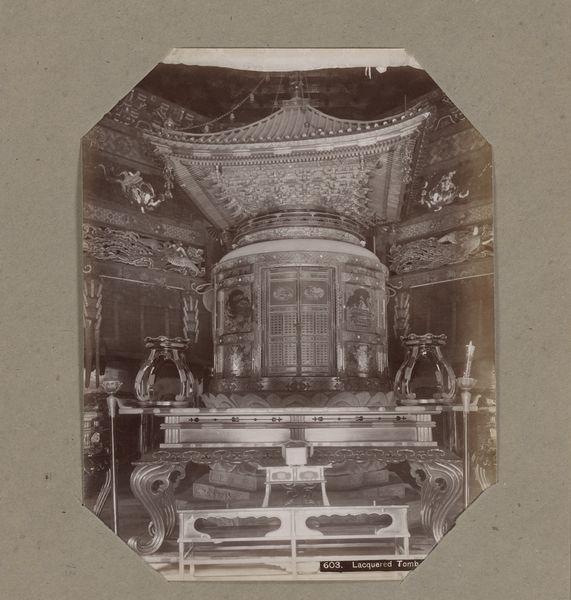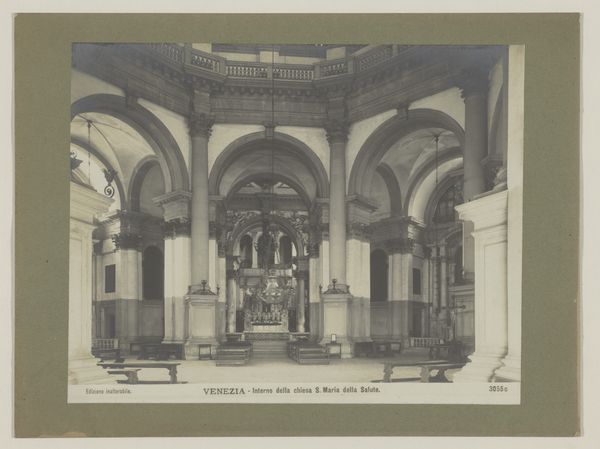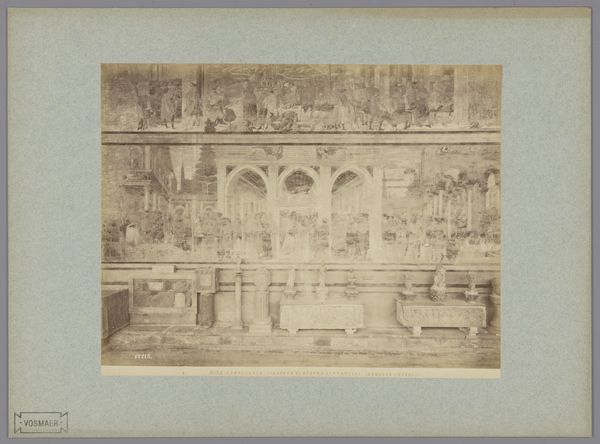
print, photography, architecture
# print
#
greek-and-roman-art
#
landscape
#
photography
#
cityscape
#
architecture
Dimensions: height 106 mm, width 165 mm
Copyright: Rijks Museum: Open Domain
Editor: So here we have Giacomo Brogi's "Doopvont in de Dom van Pisa", taken sometime between 1864 and 1881. It’s a photograph, so a print of some kind. It’s… well, it feels very staged. I mean, obviously, it is, but even more so. All of this stone and those tapers—what do you see in it? Curator: What I notice is the very careful, deliberate documentation of materials and construction techniques of the era. Brogi’s work here operates as a form of material inventory, you could say. Consider the marble: its extraction, transport, and the specialized labor required to carve such intricate designs for what must have been wealthy patrons of Pisa’s Duomo. How is the material speaking here? Editor: Hmm, I hadn't thought about it that way. It *is* all about the marble, isn’t it? How much it must have taken to get, carve, put into place… Almost makes the *point* of the font itself seem secondary to all of that. Curator: Precisely. The photograph doesn't just show us a font; it exposes a complex web of material extraction, artisanal skill, and economic power structures of the late 19th century in Italy. It really causes one to wonder what a modern digital capture would lack, doesn't it? Editor: Definitely makes you think differently about "high art" and what gets the label. I guess it’s about where we put our focus. I came in thinking "nice old photo", but I am leaving thinking about labor. Curator: Exactly. It prompts a material consciousness. Photography, here, is more than representation, it is evidence of production.
Comments
No comments
Be the first to comment and join the conversation on the ultimate creative platform.
